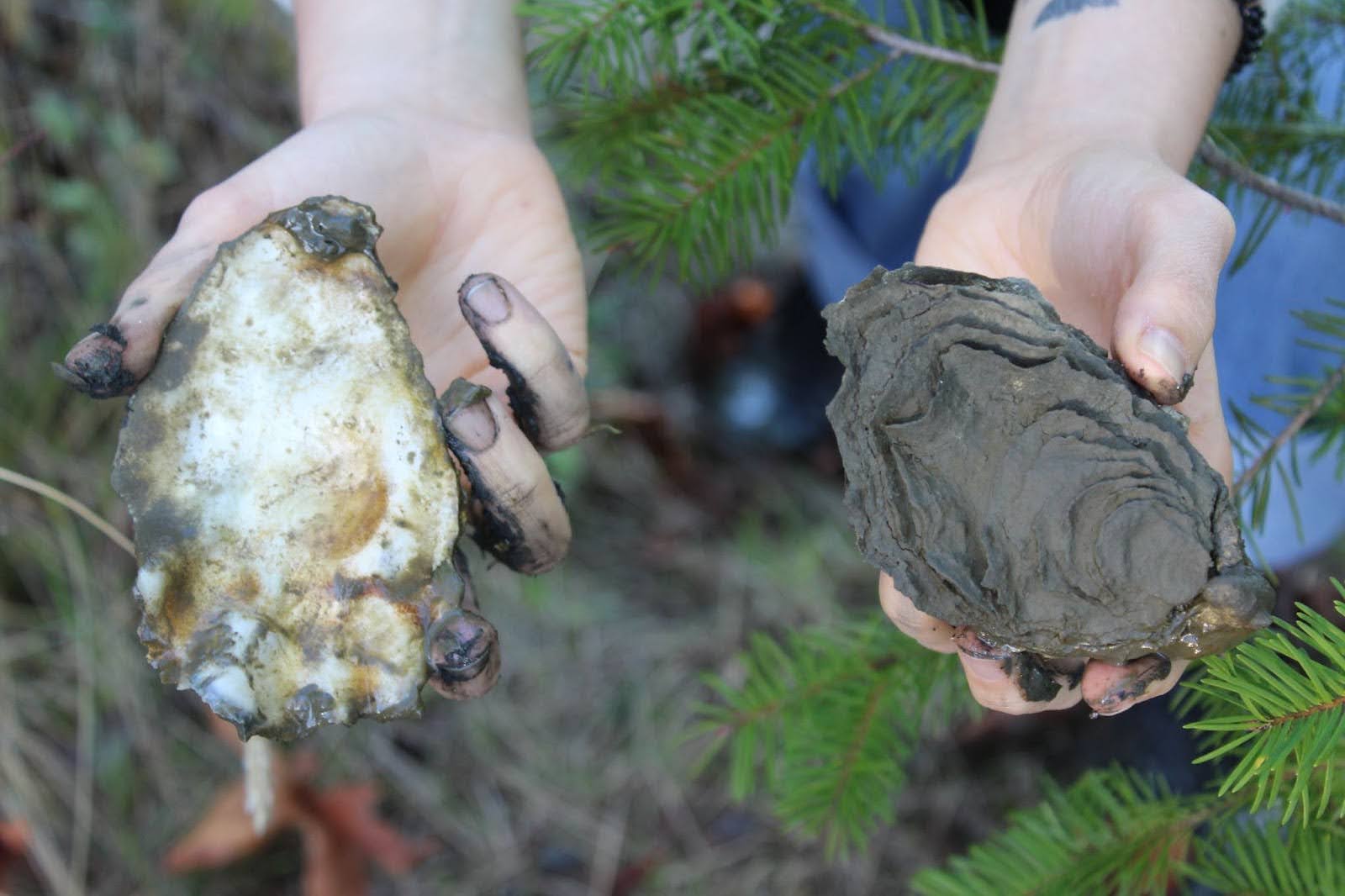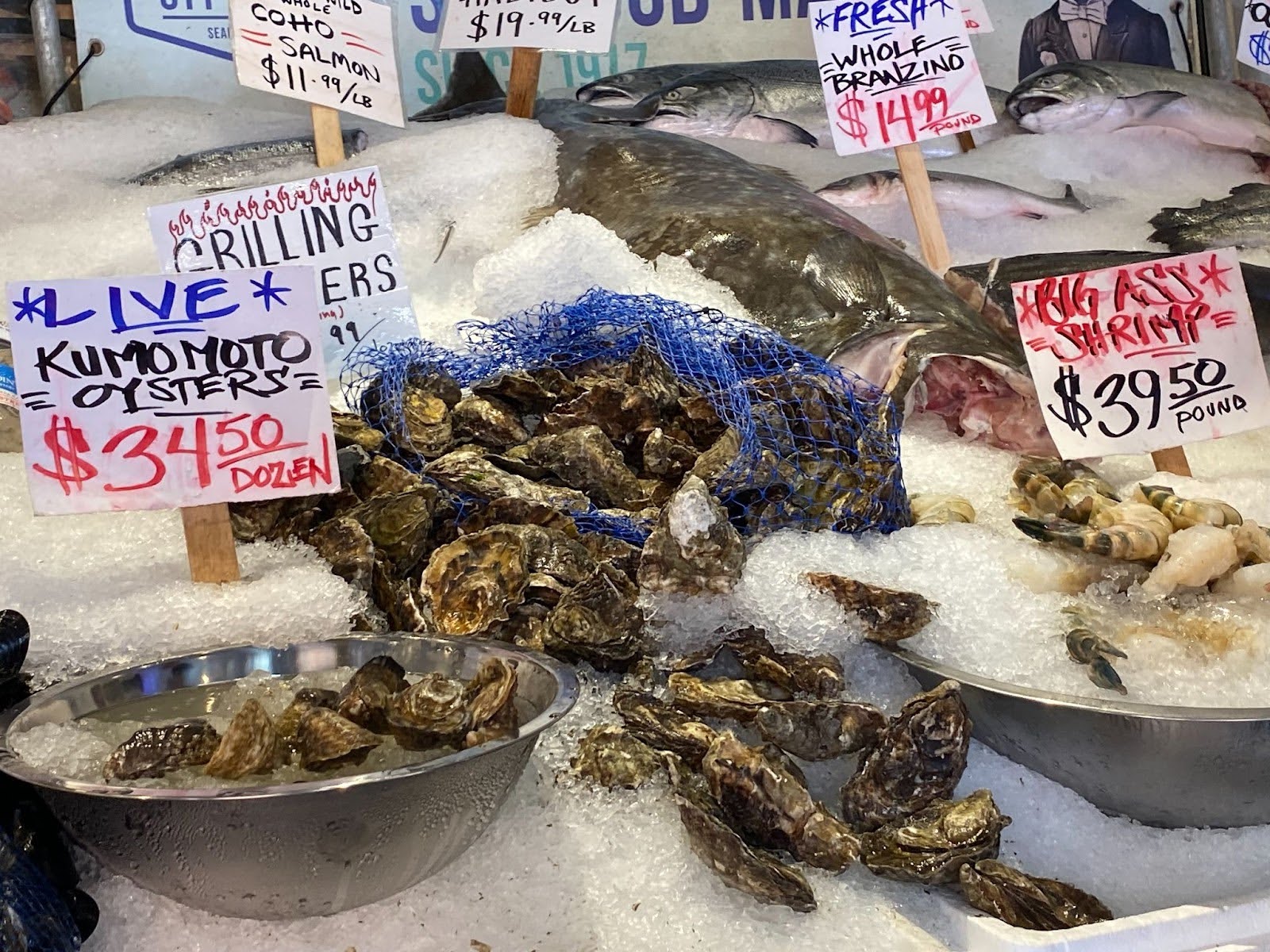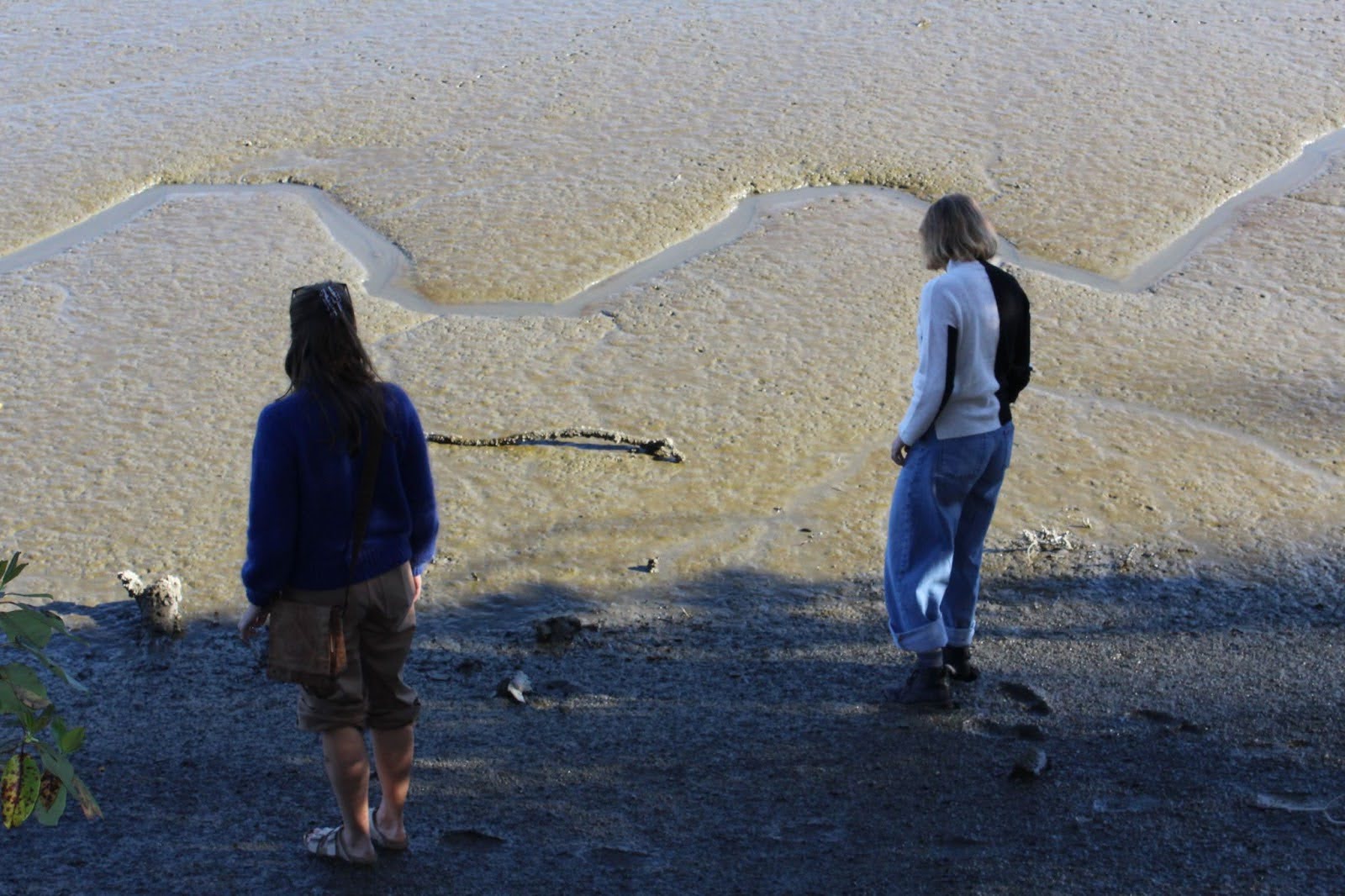From Tides to Tables: Exploring Washington’s Oyster Industry
Brightly colored flags snap in the breeze and steam billows out of large vats as vendors invite passersby for a closer look. Families, farmers, and foodies alike have gathered here to pay homage to the humble oyster. But how can one innocuous little shellfish inspire such a gathering? Don’t be fooled by its unassuming exterior, this gastropod is the engine behind a multimillion-dollar industry and may be a key player in local water quality.

Since time immemorial, oysters have populated the tidelands of the Outer Coast and Salish Sea. The historically abundant Olympia oyster (Ostrea lurida) was an important food source for coastal Native American tribes and the foundation of a booming industry in the late 1800s. Its populations declined substantially in the 20th century due to overharvesting, pollution, and the introduction of non-native predators. Today, introduced species dominate the region and the majority of oysters are hatchery-reared, not wild-harvested. Still, this small shellfish maintains an outsized impact on Washington’s waters, economies, and communities.
In the shadow of the Olympic Mountains, oyster breeders meticulously tend to the earliest life stages of oysters—microscopic larvae that will grow into the succulent, briny shellfish found in restaurants and markets worldwide. Washington’s hatcheries are the foundation of the state’s oyster industry. These facilities ensure that millions of oyster seeds are produced each year, settled onto hard substrate (preferably other oyster shells), and sold to farmers up and down the coast. Breeding oysters is a science and an art, with breeders carefully selecting oysters for qualities like fast growth and resilience to disease.

Once the juvenile oysters-known as spat once they’ve settled- are robust enough, they are transferred to Washington’s expansive intertidal zones and grow out in the nutrient-rich waters of places like Willapa Bay and Hood Canal. Oyster farmers employ many methods to grow their crops based on considerations such as available substrate and community perception. For example, some farmers practice bottom culture, where oysters are spread over mudflats to grow naturally. Others use racks and bags that float with the tides, preventing predation and ensuring uniform growth.
Arguably one of the most rewarding stages of oyster farming is the harvesting stage. After around two to three years of growth, oysters are removed from the bags, racks, stakes, or mudflats where they have been growing. The traditional wisdom dictated that harvesting should be avoided during the summer when temperatures are warmest and the oysters are converting their delicious glycogen stores into gametes for spawning. However, advances in oyster breeding, food safety, and environmental regulations now make it safe to eat oysters year-round.
Once harvested, the oysters are whisked off to processing facilities, where they are cleaned, sorted, and packaged. Some are sold fresh in the shell, destined for raw bars around the state or across the country, while others are shucked, and frozen or canned for broader markets.
Washington’s oyster industry has adapted quickly to changes in consumer demand. With the rise of the farm-to-table movement, more consumers are interested in knowing where their food comes from, and Washington’s oysters carry the dual appeal of being both local and sustainably farmed. Direct-to-consumer sales, including online ordering, have also become more prominent, allowing customers nationwide to enjoy Washington oysters, often within days of harvest.
Oysters from Washington are prized for their diversity. The state is home to several species, including the Pacific oyster (Crassostrea gigas), Kumamoto oyster (Crassostrea sikamea), and the smaller native Olympia oyster. Each species has its distinctive flavor profile influenced by the waters they grow in. As filter feeders, their flavor is highly influenced by the salinity, mineral content, and food availability over the years of development before they end up on your plate.

Before moving to Washington, I had never paid much mind to oysters. I slurped down the obligatory oyster (Crassostrea virginica) on a field trip to a Chesapeake Bay oyster farm during college, but that felt more like a rite of passage than a culinary delight. Here in Washington, all you need to do is take a walk at Pike Place Market or visit one of the up-and-coming restaurants in Ballard and you can’t miss how oysters are taking center stage in this coastal culinary scene.
Local restaurants have embraced the oyster’s resurgence, often showcasing different varieties on their menus, paired with Washington wines or craft beers. At an oyster bar in Ballard, I recently sampled a suite of local oysters. In the process, I learned that oysters cultivated closer to the Strait of Juan de Fuca had a sweeter, more delicate flavor compared to their briner counterparts from deeper in Hood Canal. While I preferred the milder flavors of Skunk Island oysters (ironic, I know), I had no problem tossing back any oysters and finishing with a glass of sparkling wine. After a night slurping these slippery shellfish, it is not hard to understand how oysters have become a symbol of the region’s culinary identity and a testament to the synergy between sustainable farming and artisanal dining.
More than just a commercial venture, Washington’s oyster industry is increasingly intertwined with efforts to restore the state’s degraded coastal ecosystems. There is a concentrated effort to restore native Olympia oysters, led by both conservationists and the industry itself. Other projects aim to rebuild oyster reefs in critical habitats, not only for their ecological value but also for their potential to enhance coastal resilience to environmental change.
Oysters play a critical role in improving water quality, acting as natural filters that remove excess nutrients, suspended particles, and harmful pollutants from the water. Each oyster can filter up to 50 gallons of water a day, successfully removing nutrients that, in excess, can lead to eutrophication and harmful algal blooms. This filtration not only improves water clarity but also enhances the overall health of aquatic ecosystems, creating cleaner, more hospitable environments for marine life. Moreover, oyster reefs and farming methods that replicate natural processes foster biodiversity and provide essential habitats for juvenile fish and invertebrates. In addition to their ecological benefits, oyster reefs serve as living shorelines, buffering against storm surges and erosion, making coastlines more resilient to the growing threats of climate change.
According to the Puget Sound Restoration Fund, “Olympia oyster restoration in Puget Sound is a BIG, collective enterprise inspired and powered by Tribes, shellfish growers, federal, state, and local agencies, foundations, Marine Resources Committees, tideland owners, and countless others.” For example, the Swinomish Indian Tribal Community has partnered with Tribal, state, federal, and non-governmental organizations to seed more than half a million native oysters to restore historical beds. It’s a reciprocal relationship—healthier ecosystems support better conditions for cultivated oysters, while the farms and reefs themselves contribute to ecological health.
“Olympia oyster restoration in Puget Sound is a BIG, collective enterprise inspired and powered by Tribes, shellfish growers, federal, state, and local agencies, foundations, Marine Resources Committees, tideland owners, and countless others.”
Puget Sound Restoration Fund
Despite the positive contributions of oysters, both farmed and wild, oyster reefs, hatcheries, and farms face threats to their existence. Ocean acidification, caused by rising atmospheric carbon dioxide levels, has severely impacted the survival of oyster larvae, whose fragile shells can dissolve in more acidic waters. Additionally, warmer waters foster harmful algal blooms, which can devastate entire harvests. On top of that, regulatory pressures and competition for space with other coastal industries pose ongoing challenges to the future of oyster farming.
The oyster industry in Washington is at a critical juncture. Environmental change poses an ongoing threat, with warmer waters, ocean acidification, and habitat loss creating uncertain futures for both farmed and wild oysters. However, the industry is also ripe with opportunity. Advances in aquaculture technology, including new breeding techniques and resilient farming practices, offer hope for the future.

State and federal policies play a crucial role in shaping this future. As policymakers grapple with the challenges of climate resilience, there is a growing recognition that the oyster industry must be supported—not only for its economic contribution but also for its key roles in ecological restoration and resilience.
Washington’s oyster industry epitomizes the intricate balance between nature and commerce. From hatcheries to the final shuck, every step in the process reflects the careful management of one of the state’s most valuable natural resources. As the industry navigates the challenges of climate change and environmental stewardship, oysters will continue to be more than just a culinary delicacy—they’ll remain at the heart of Washington’s coastal identity, as both a sustainable food source and a vital ecological ally.